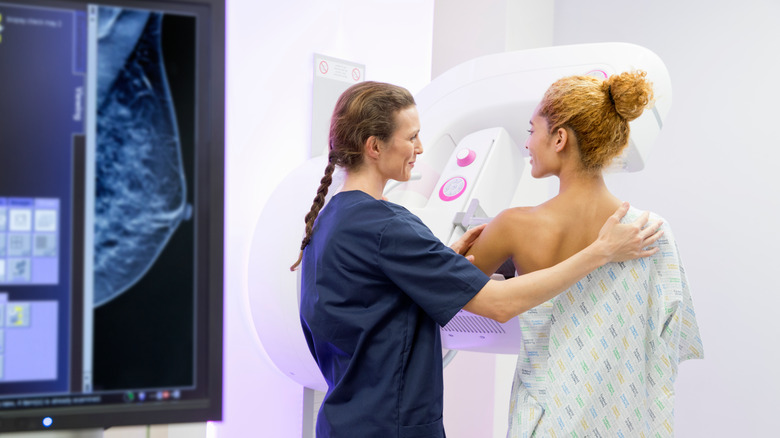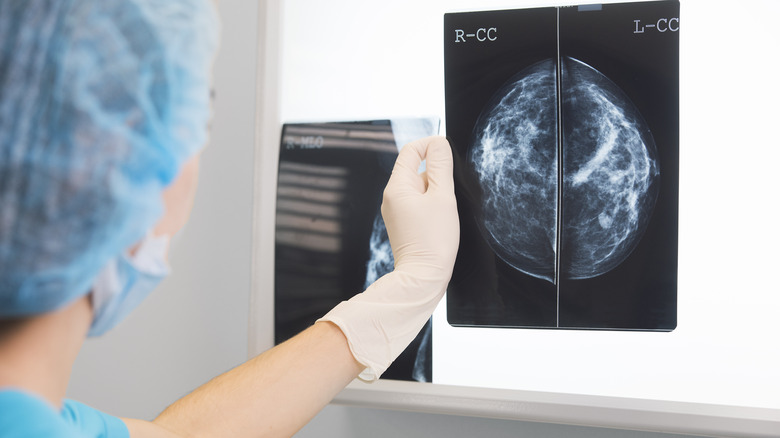New FDA Mammogram Guidelines Could Be A Game Changer In Breast Cancer Early Detection
Breast cancer is the most common type of cancer worldwide. Every year there are approximately 264,000 women diagnosed with breast cancer in the United States and around 2,400 men, the Centers for Disease Control and Prevention (CDC) reports. Being an older woman puts you at the most risk of developing breast cancer. The United States Preventive Services Task Force (USPSTF) recommends women start breast cancer screening at age 50, with scheduled mammograms biennially.
Mammograms are the most popular type of breast cancer screening, which includes x-rays of the breast to expose any cancerous tissues. However, mammograms don't treat all breasts equally — particularly dense breast tissue that can make evaluating the results more challenging.
The Food & Drug Administration has created new guidelines surrounding mammogram reports that can improve early detection, better inform patients, and make many aware of secondary exams.
Patients will now be informed if they have dense breast tissue
After undergoing a mammogram, your results center around if there are any cancer concerns. However, with new mammogram rulings from the FDA, patients will now be informed if they have dense breast tissue. The density relates to how much fibrous and glandular tissues there is, as per the American Cancer Society. And as such, these tissues are pretty thick making it hard for medical practitioners to detect cancer with mammograms. This challenge occurs as the masses caused by cancer are shown as white in the mammogram reports, which is the same color as the thick breast fibers appear.
Almost one in two women is identified as having dense breast tissue, and, while normal, dense breast tissue is also linked to an increased risk of breast cancer. With the new ruling, women can now be more informed and better positioned to discuss with their healthcare provider their options. Additional testing may be necessary to spot things a traditional mammogram can miss. Digital breast tomosynthesis, also known as a 3D mammography or a breast ultrasound, are secondary screening options. Consult with your doctor and consider additional screening to make the best medical decisions for you.

